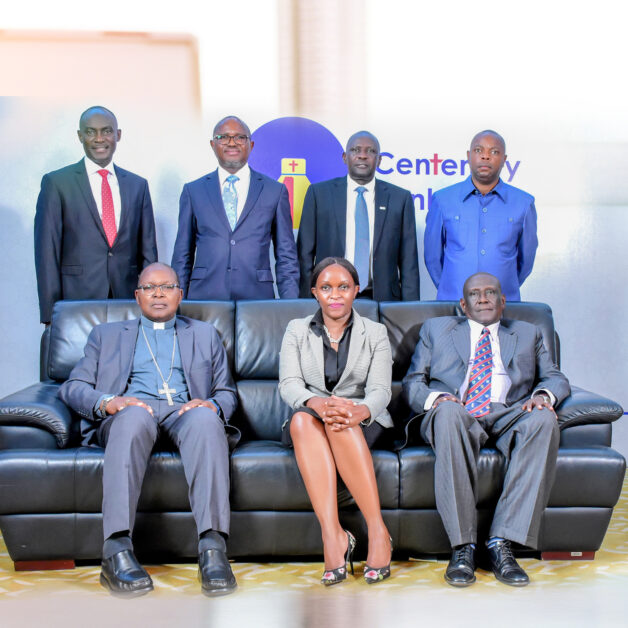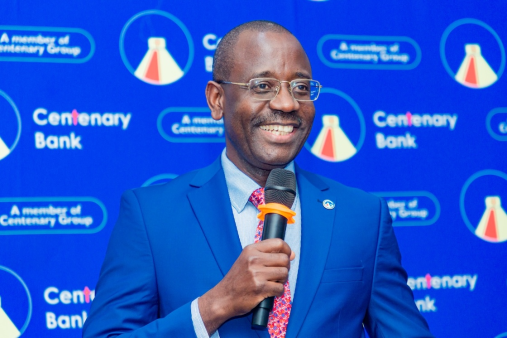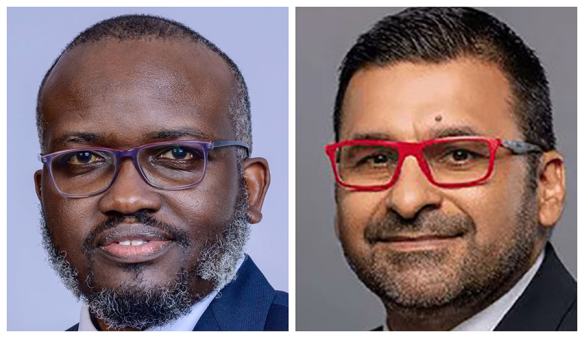A close analysis of the 2022 financials of the 25 banks in Uganda, reveals several things, but one thing that you can’t miss is how Centenary Bank stands out of the crowd.
And it is not because it is the number two bank⏤ it has been number two since 2018⏤ and neither is it because it is the only indigenously majority-owned bank in the top 5 and one of only two in the top ten, for it has been like that for about 10 years to date.
But rather, what makes it an unmissable outlier, soaring up there like an eagle on a hunt, is the speed at which it is growing.
Let’s look at, for example, growth in customer deposits, the most important engine of every financial institution. In 2022, the bank’s customer deposits grew by 22.7% from UGX3.18 trillion to UGX3.90 trillion. In absolute terms, of the 25 banks, Centenary registered the highest absolute growth in customer deposits⏤UGX722.7 billion! It also registered the largest absolute growth in lending (UGX569.4 billion), from UGX2.25 trillion to UGX2.82 trillion. Perhaps, also worth noting is that unlike most of the top 10 banks who all increased their investments in government securities, Centenary Bank, in 2022 actually cut its government securities appetite by 17.2%, from UGX868.7 billion in 2021 to UGX719.1 billion in 2022, comfortably remaining the second largest lender.
As a result, it also registered the second largest income growth- UGX98.3 billion, from UGX864 billion to UGX962.3 billion.
It is therefore not surprising that the bank also registered the biggest absolute growth in assets. Assets grew from UGX4.8 trillion in 2021 to UGX5.7 trillion- growing by a whole UGX963.8 billion! No other bank grew by this much. The closest, Equity Bank, grew by UGX557.7 billion. For context, Centenary Bank’s growth in assets is nearly equivalent to the combined assets of Tropical Bank, Cairo International Bank, Opportunity Bank and Guaranty Trust Bank. The four banks had a combined total of UGX1,068 billion in assets!
Success from serving the bottom of the chain
Although it wasn’t until 2022 that Centenary Bank revisited its values and performance culture and formally adopted the acronym EAGLE POISE⏤ Excellent, Accountable, Great in Execution, Leading by Example, Equal Opportunity player, Professional, One-team-one-goal, Integrity, Superior customer service and Environmental stewardship⏤ the bank has always been eagle-like; bold, defiant, a deviant, and chose to play in spaces where very few banks wanted to play.
| 2013 | 2014 | 2015 | 2016 | 2017 | 2018 | 2019 | 2020 | 2021 | 2022 | |
| Deposits (UGX billions) | 965.8 | 1,170.0 | 1,380.2 | 1,626.6 | 1,911.1 | 2,282.2 | 2,530.6 | 3,136.7 | 3,181.3 | 3,904.0 |
| Lending (UGX billions) | 965.8 | 1,170.0 | 1,020.4 | 1,247.8 | 1,335.3 | 1,529.2 | 1,736.3 | 1,958.9 | 2,245.6 | 2,815.0 |
| Net Profit (UGX billions) | 58.0 | 73.8 | 101.6 | 109.9 | 100.3 | 107.6 | 156.0 | 161.2 | 211.5 | 249.6 |
| Assets (UGX billions) | 1,451.0 | 1,630.0 | 1,974.4 | 2,315.8 | 2,706.3 | 3,170.8 | 3,567.0 | 4,499.9 | 4,757.7 | 5,721.5 |
Right from its humble begging in 1983, then as a credit trust of the Uganda National Lay Apostolate, to 1985 when it got licensed as a financial institution, and to 1993 when it got a commercial banking license, Centenary Bank has consistently chosen to serve the rural poor, and those at the bottom of the chain, at a time when most banks of the banks were clamouring for the middle and top segments of the market.
Even though, at first, it was a tightrope, by the time the bank turned 30 years, in 2013 this strategy had paid off and quite handsomely.
As of the end of 2013, Centenary Bank had managed to pull together 1,240,077 customers, the highest in the industry. Although not your typical cash-rich customers, the bank managed to even out on economies of scale, reaping big on deposits- UGX965.8 billion. This allowed the bank to extend UGX672.3 billion in loans and closing the year with UGX1.45 trillion in assets.
By the time it turned 35 years, in 2018, the bank comfortably closed the year as the second largest across board⏤ by deposits (UGX2.82 trillion), by lending (UGX1.53 trillion), by income (UGX568.2 billion), by net profit (UGX107.6 billion) and by assets (UGX3.17 trillion).
And like the Baganda people of Central Uganda say, “Akezimbira, tekaba kato” (one with their own property/home is a child no more) the bank, also by this time, had completed its new USD16.3 million imposing home- Mapeera House, on Plot 44-46 Kampala Road .
Building on that success, the bank has year after year broken new records⏤ closing 2022 with over 2.4 million customers, an asset base of UGX5.72 trillion, 80 branches, 205 ATMs and 6,425 banking agents.
As of the end of December 2022, the bank has the third largest distribution footprint of banking agents, after Stanbic Bank (8374 agents) and Equity Bank (7,727 agents).

The bank is also very solid, having increased share capital from UGX28.9 billion in 2021 to UGX173.1 billion at the end of 2022, this is above the UGX120 billion minimum threshold. Core capital, unimpaired by losses also increased from UGX837.8 billion to UGX976.8 billion⏤ 8 times above regulatory limits of UGX120 billion.
Towards a smart and inclusive bank by 2026
In an October 2022 interview with CEO East Africa Magazine, Fabian Kasi, the bank’s Managing Director since August 2010 boiled down the bank’s success to “being a bank that continuously delivers value to our customers and all stakeholders while leveraging on technology, people and good relationships”.
He further said that the bank’s growth is pegged on 5 key things, namely:
- A customer-centric value proposition delivery and good bank partnerships
- Productive staff that successfully implement the Bank’s strategy
- Investment in technology
- Efficient processes
- Good risk management.
As the bank turns 40 this year and is well aware of the need to remain relevant through the times, Mr. Kasi says Centenary is evolving to both remain relevant and respond to the future needs of the market.
“The Bank targets to be a SMART Bank by 2026. It has therefore invested heavily in technology and product development e.g. recent developments include; the Mastercard Platinum Card, Cente-On-The-Go, Prepaid cards, Diaspora Funeral Cover and more is still to come,” he told this reporter.
Hardly two years into this Smart strategy, the bank in made phenomenal growth towards digitalisation, diverting more than 85% of total transactions from the traditional banking hall to the more convenient and affordable digital channels.
In a commentary accompanying the 2022 results, Fabian Kasi says that being a smart bank is much more than a trend and sits at the core of the bank’s strategy to deepen financial inclusion.

“Financial inclusion is at the heart of what we do at Centenary Bank. In 2022, we improved the accessibility and usability of our services by enhancing our digital offerings. The uptake of digital channels improved. We saw agent banking contribute 42.76% of transactions, mobile banking contributed 19.96%, the ATMs contributed 22.00% and the banking hall was down to 13.80%,” he said adding that the bank continues to invest significantly in digitalisation and financial inclusion.
“ Our number of agents increased by 37.9% from 4,446 in 2021 to 6,132 in 2022. Cente-mobile users increased by 24.7% from 826,201 in 2021 to 1,030,628 in 2022, internet Banking users increased by 1.3% from 5,268 in 2021 to 5,338 in 2022 while Cente-on the go and Cente-xpress number of customers increased by 131.1% from 106,379 accounts in 2021 to 245,856 accounts in 2022,” he revealed.
He also said that the bank continues to engage the unbanked and mission-critical segments such as microfinance customers, Small and Medium Enterprises (SMEs), agribusinesses, as well as women, youth, and refugees.
“Over the next five years, we hope all our partners get a sense of the excitement we have for the future. This is truly the story of a Bank where God Leads the Way. We are working towards becoming a SMART bank by 2026, with a series of technology-led solutions, that
drive efficiency, process automation, convenience, customer centricity, sustainability, learning and growth,” Kasi concludes.

 Letters to My Younger Self: Robinah Siima — “Success Is Quieter, But Richer”
Letters to My Younger Self: Robinah Siima — “Success Is Quieter, But Richer”


